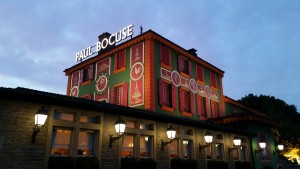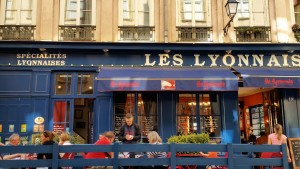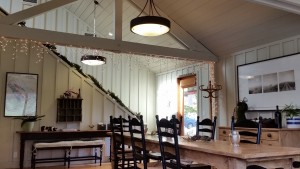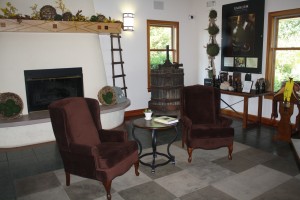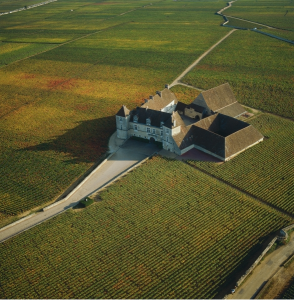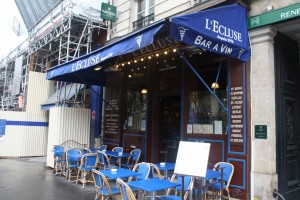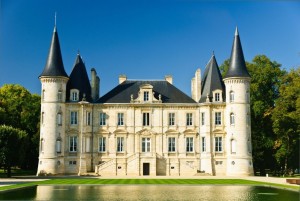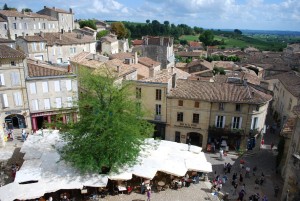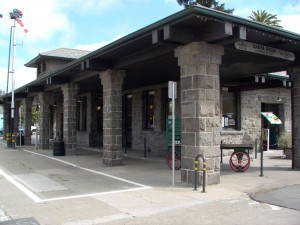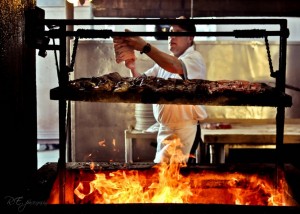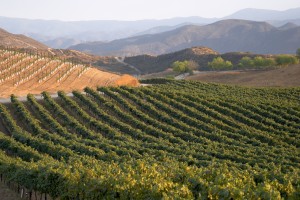Healdsburg is the gateway to the Dry Creek Valley in Sonoma County and a backdoor into the Russian River area as well. We think it’s fair to say it’s Sonoma’s culinary capital and it’s quite full of tourists at all times of the year. These days it’s also the home of many in-town tasting rooms of some distinction.
There is some controversy over how to pronounce the town’s name. Is it HELDS-burg or HEELDS-burg? For a long time we said the former but now some locals tell us that the latter is correct.
We remember when the town, however you pronounce it, was a sleepy, almost dusty farmers’ village. The first time that we visited Healdsburg together, in 2000, there was only one restaurant open where we could find lunch served at tables, as opposed a sandwich shop with fare to eat in the park. If you went wine tasting in those days, it was a good idea to pack a picnic. For the most part, we avoided going into Healdsburg when we tasted wines in Sonoma County.
Then in 2006 the New York Times published an article entitled, “Healdsburg, Calif., Emerges as a Dining Destination” http://www.nytimes.com/2006/08/20/travel/20choicesideweb.html . Was this the same place we knew? Indeed not; Healdsburg had grown, flowered and become a destination in itself. Of the restaurants mentioned in the article, Cyrus has decamped for Napa town, but Willi’s Seafood and Raw Bar is as good as ever and Charlie Palmer’s Dry Creek Kitchen is still sublime. Alas, Bistro Ralph and its heavenly short ribs is now a memory but it has been replaced by an Italian bistro, Scopa. Baci is another Italian choice down Healdsburg Avenue; Café Lucia serves nouveau Portuguese meals; and the Healdsburg Bar and Grill is there for a good, honest hamburger. And if you still want that picnic, you can buy your gourmet victuals at the Oakville Grocery or Shelton’s.
Although the aforementioned tasting rooms and restaurants are a more than adequate reason to visit Healdsburg, one of the great pleasures of the town is just walking around the plaza at the center of town. Okay, it’s touristy but it’s for a higher class of tourists, as snobbish as that may be. There are galleries, ice cream shops, a kitchenware store, a few hotels and some bakeries. No tee shirteries to be seen. In the center of all that is the plaza, a more than century-old park with towering trees and a bandstand in the middle. Often the square hosts markets, antique shows and summer concerts.
Photo courtesy of the City of Healdsburg
A not-so-subtle change has occurred in tasting wine in Healdsburg. There have been tasting rooms there for many years. But in honesty and with no disrespect intended, the wines were not very good. In the past few years, some excellent wineries have opened tasting rooms in town, including La Crema, Siduri, Clos Pegase, Stonestreet and Hartford Family. Each has its own personality, from relaxed to frenzied, but you can spend a day tasting great wine without driving between wineries.
There is a sort of cognitive dissonance about Healdsburg today. It is very much a part of Wine Country and the tourism trade that has grown up around wine tasting. But there is also more than a lingering memory of small-town America, especially in the plaza. Instead of a town to bypass on the way to the vineyards, Healdsburg is now worthy of a visit for itself.

